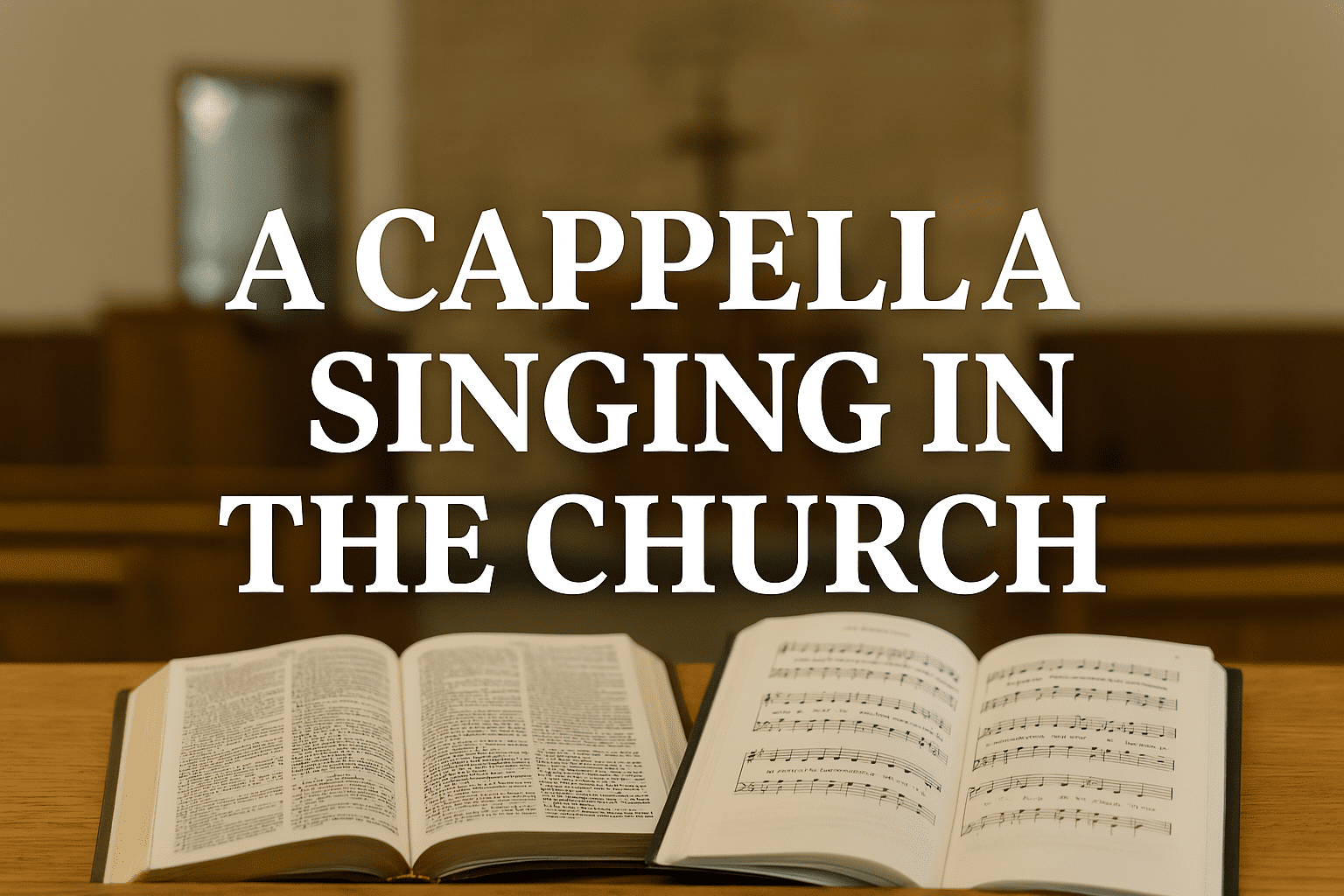God’s Pattern for Music in Worship & The History of Man’s Alteration
Music has always played a powerful role in religious expression. However, when it comes to the church, God’s Word provides clear guidance about how music is to be used in worship. From the beginning of the New Testament church, the saints were instructed to offer vocal praise—singing without the accompaniment of mechanical instruments. This is commonly referred to as a cappella singing. Yet, as time passed, man introduced instrumental music into worship, leading to centuries of division, controversy, and departure from God’s pattern.
In this article, we will explore:
- The biblical teaching on a cappella singing
- The history of how instrumental music entered the church
- How this human innovation caused widespread division
- Why it still matters today
The Biblical Pattern for Music in Worship
1. God’s Command: Sing
From the very first Christians onward, the New Testament pattern for music in the church is singing, and only singing:
“Speaking to one another in psalms and hymns and spiritual songs, singing and making melody in your heart to the Lord.”
— Ephesians 5:19
“Let the word of Christ dwell in you richly in all wisdom, teaching and admonishing one another in psalms and hymns and spiritual songs, singing with grace in your hearts to the Lord.”
— Colossians 3:16
Notice that:
- The instrument is the heart, not mechanical devices.
- The command is to sing, not play.
- The result is both teaching and admonishing one another.
No New Testament passage commands or authorizes instrumental music in Christian worship.
2. Singing in the Early Church
The first-century church, under apostolic teaching, practiced a cappella singing exclusively. Historians, such as Everett Ferguson, note that for 600 years after the establishment of the church, there is no record of instrumental music being used in Christian assemblies.
Church leaders like Clement of Alexandria, Tertullian, and Eusebius all testify to the fact that the early church sang without instruments, following the pattern of the apostles.
The History: How Man Introduced Instrumental Music
The Innovation
It was not until the 7th century that Pope Vitalian introduced the organ into some churches (around 670 A.D.), without any New Testament authority. Even then, its use was resisted and was not universally accepted.
Many respected religious leaders from different backgrounds openly rejected instrumental music:
- John Calvin said, “Musical instruments in celebrating the praises of God would be no more suitable than the burning of incense, the lighting of lamps, and the restoration of the other shadows of the law.“
- Charles Spurgeon, a famous Baptist preacher, refused to use instruments, saying, “I would as soon pray to God with machinery as sing to God with machinery.“
This shows that opposition to instrumental music was common even among those outside of the churches of Christ.
The Division It Caused
As the organ and other instruments were gradually introduced, major divisions occurred:
- In the Roman Catholic Church, instruments became part of ritualistic worship.
- In the Protestant Reformation, some groups rejected them entirely, while others retained them.
- In the Restoration Movement of the 1800s, when brethren sought to restore the New Testament church, the introduction of the instrument once again caused serious division.
By the late 1800s, many churches split into two groups:
- Churches of Christ, who refused to accept the unscriptural practice of instrumental music.
- Christian Churches/Disciples of Christ, who accepted the instrument and later introduced even more innovations.
One man’s tradition—not God’s Word—became responsible for dividing faithful believers.
Why the Addition of Instruments is a Serious Issue
1. God Has Already Spoken
“And whatever you do in word or deed, do all in the name of the Lord Jesus.”
— Colossians 3:17
If the Lord has told us how to worship (sing), then we have no authority to add (instrumental music) or subtract from His instructions.
2. Silence of the Scriptures
Some argue, “The Bible doesn’t say not to use instruments.”
But God’s silence is prohibitive, not permissive.
Consider Noah:
When God said gopher wood (Genesis 6:14), did He have to list every other kind of wood and say, “Do not use oak, cedar, or pine”?
No. His specification excluded all others.
The same principle applies to worship. God said sing. That excludes playing.
3. True Worship Must Be According to God’s Will
“But in vain they do worship me, teaching for doctrines the commandments of men.”
— Matthew 15:9
When we add man-made traditions to worship, we risk turning it into vain worship—meaning God does not accept it.
Why A Cappella Singing Still Matters Today
- It honors God’s authority without alteration.
- It follows the example of the apostles and the early church.
- It promotes congregational participation, where all teach and admonish one another (Colossians 3:16).
- It maintains unity, avoiding the divisions that instrumental music has caused for centuries.
- It keeps the focus on the words of the songs and the melody of the heart—not on performance.
What Should the Church Do Today?
To be the church you read about in the Bible, we must:
- Follow the pattern revealed in the New Testament.
- Reject man-made innovations that God never authorized.
- Restore simple, heartfelt, a cappella singing in every assembly.
“Thus says the Lord: Stand by the roads, and look, and ask for the ancient paths, where the good way is; and walk in it, and find rest for your souls.”
— Jeremiah 6:16
Conclusion
The introduction of instrumental music into worship was man-made, not God-given. It has caused division, confusion, and departure from the simplicity of the gospel.
God has given His church:
- The command to sing,
- The example of the early church singing,
- And the warning against going beyond what is written (1 Corinthians 4:6).
Let us be content and joyful with what God has authorized: a cappella singing—offered with grateful hearts to the glory of God.


0 comments